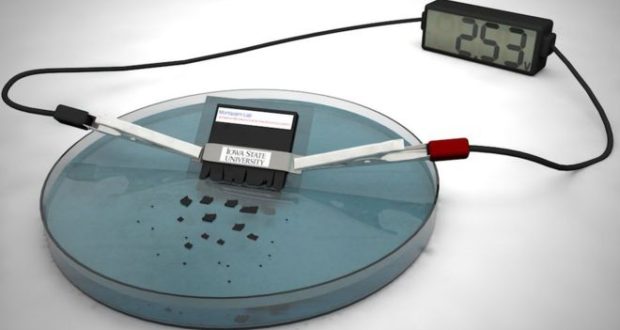-
Tips for becoming a good boxer - November 6, 2020
-
7 expert tips for making your hens night a memorable one - November 6, 2020
-
5 reasons to host your Christmas party on a cruise boat - November 6, 2020
-
What to do when you’re charged with a crime - November 6, 2020
-
Should you get one or multiple dogs? Here’s all you need to know - November 3, 2020
-
A Guide: How to Build Your Very Own Magic Mirror - February 14, 2019
-
Our Top Inspirational Baseball Stars - November 24, 2018
-
Five Tech Tools That Will Help You Turn Your Blog into a Business - November 24, 2018
-
How to Indulge on Vacation without Expanding Your Waist - November 9, 2018
-
5 Strategies for Businesses to Appeal to Today’s Increasingly Mobile-Crazed Customers - November 9, 2018
Self-destructing battery could be a boon for military and medical electronics
Nanoparticles contained within the battery are subsequently released, which do not degrade but are instead dispersed into the environment.
Advertisement
Researchers at the Iowa State University developed a battery that self-destructs and dissolves in just 30 minutes when submerged in water.
Though generally the electronic devices are made keeping in mind that they will be last long and will be used for a longer period of time but it looks like “transient electronics” has defied this statement and are specially designed in such a way that they can degrade themselves in the presence of environmental elements such as light, moisture, heat etc whenever they have completed their work.
Reza Montazami, an assistant professor of mechanical engineering at Iowa State University and an associate of the U.S. Department of Energy’s Ames Laboratory, has been exploring transient technology for many years.
The battery consists of eight layers with anode, cathode and electrolyte separators, which are enclosed within two layers of a polyvinyl alcohol-based polymer. Montazami further added that, “It’s the first transient battery to demonstrate the power, stability and shelf life for practical use”.
“Unlike conventional electronics that are created to last for extensive periods of time, a key and unique attribute of transient electronics is to operate over a typically short and well-defined period, and undergo fast and, ideally, complete self-deconstruction and vanish when transiency is triggered”, the researchers wrote in their paper, which was published in the Journal of Polymer Science, Part B: Polymer Physics.
However, when the battery is dropped in water, the polymer casing swells up, breaks up the electrodes and dissolves away. “The particles are hardly traceable”, Montazami says. Montazami describes the approach as a “physical-chemical hybrid transiency”.
Scientists at the University of Iowa say they’ve developed a battery that is 5 mm long and 1 mm thick that can dissolve in water over the course of a half hour. While the technology is very similar to commercial battery technology, it distinguishes itself when it’s dropped in water.
Moving forward, if the project gets more funding, Montazami said he hopes to explore building a transient battery that can be triggered remotely – a technology he envisions being useful for military surveillance. Scientists believe that multiple small batteries will be a better alternative for such applications. Second, the batteries need many layers and a compound structure. And third, fabricating the batteries was hard and took repeated attempts.
Advertisement
And what made the team working through all that?




























